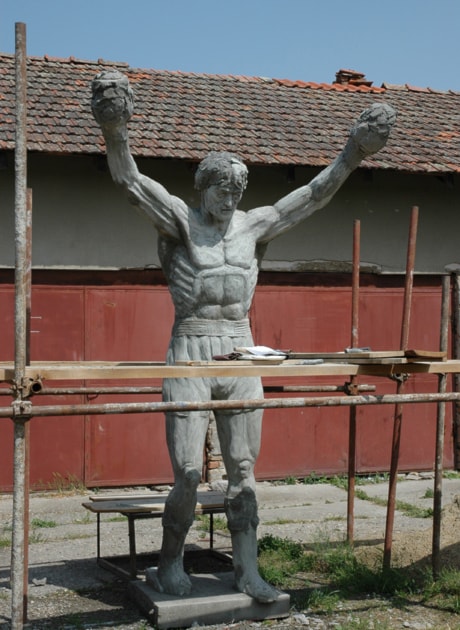Filmmaker Barry Avrich had his work cut out for him when he flew to a tiny town in Serbia two years ago to document the elation over the erection of a statue for the region’s hero: Rocky Balboa.
For starters, the Toronto-based moviemaker didn’t speak Serbian and couldn’t communicate with the residents of Zitiste, a poor farming village about 60 kilometres north of Belgrade that’s endured centuries of floods and mudslides.
He also hadn’t sold the film — something usually done before shooting begins.
Then there was the trust factor.
After Sacha Baron Cohen’s comedy film Borat: Cultural Learnings of America for Make Benefit Glorious Nation of Kazakhstan mocked those townspeople in 2006, Avrich had to prove to the Zitiste residents that he wasn’t there to poke fun at their adulation for the fictional, underdog boxer portrayed by Sylvester Stallone in the iconic Rocky films.
In the end, he found himself caught up in the excitement that’s captured in Amerika Idol: A True Story, which is currently screening at the Hot Docs festival.
“We went from thinking that this would be this nutty comedy to being extraordinarily impassioned by their mission,” Avrich said in a recent interview.
Directed and executive produced by Avrich, the film follows the villagers in Zitiste (which means “wheat,” their main harvest) as they battle red tape and funding issues to get a public statue made out of cement (they couldn’t afford bronze) in the likeness of the “Italian Stallion.”
With Rocky as a symbol of hope in the centre of the village, Zitiste hoped to rise above the global image of “war-torn Serbia” and put itself on the map, which it’s done, said Avrich, who first read about the story in the New York Times.
“This character that Stallone developed was truly universal: The man who comes from nothing, the story of ‘zero to hero’ and very much the story of Stallone, very much the story of every boy and every working man in the blue-collar world who wants to just do better in life and he fights his way out,” said Avrich, who has also published several marking books and directed numerous television projects.
“They love Stallone in Serbia because he falls down and he gets up again and that’s exactly what’s happened to this village.”
Once Avrich earned their trust, he said, the village was “mesmerized” with the news that he wanted to film their journey.
“They had an international press conference for us, they killed a deer in my honour and I had ‘Bambi goulash,’ as they called it and they baked a cake the size of a truck with the Canadian flag on it,” he recalled.
Avrich and his producer Melissa Coghlan were even able to help the mission by landing an interview with the main man: Stallone.
“The town folk, if I can call them that, they tried writing letters to Stallone for years and Stallone did not respond to them and we got to Stallone through our own sort of Hollywood contacts and he granted us an interview and he was completely blown away,” said Avrich.
“When he found out that the sculpture was made out of cement, you know, he sort of leaned into the microphone and went: ‘Uh, cement, I love that. It’s real and it’s forever. I love that. These people have conviction,”’ Avrich said in his spot-on Stallone voice. “And he was in tears with this because he was just blown away by the story.”
